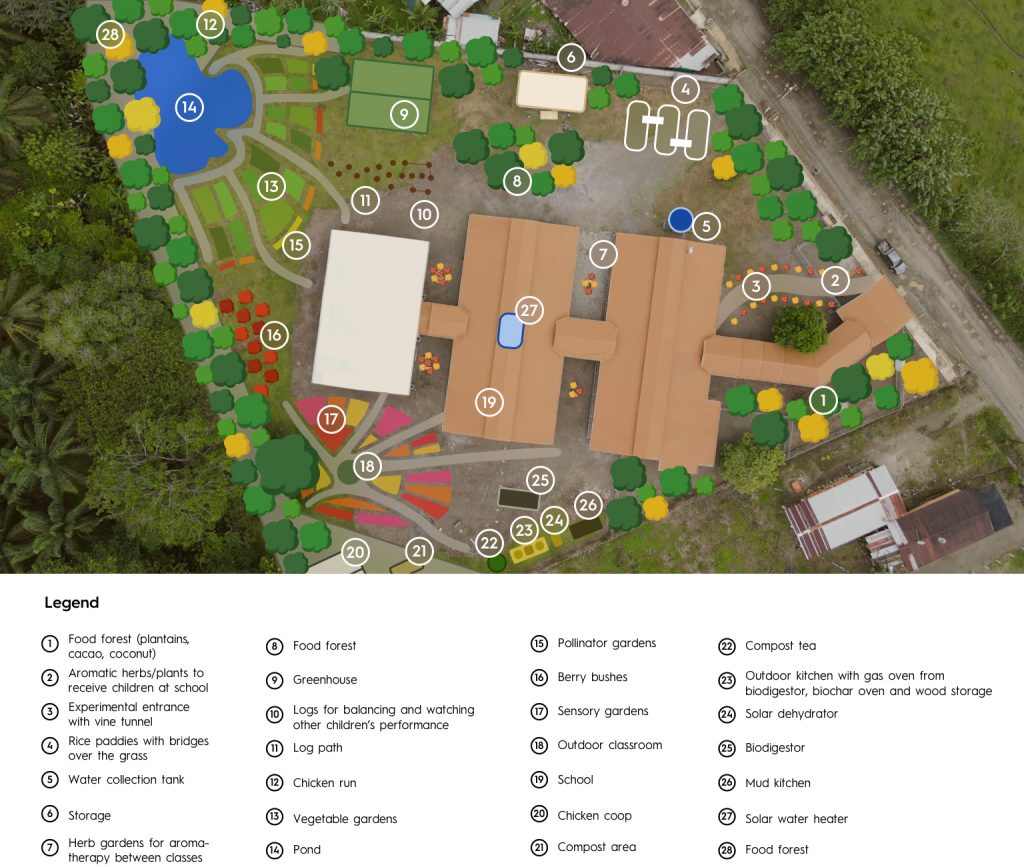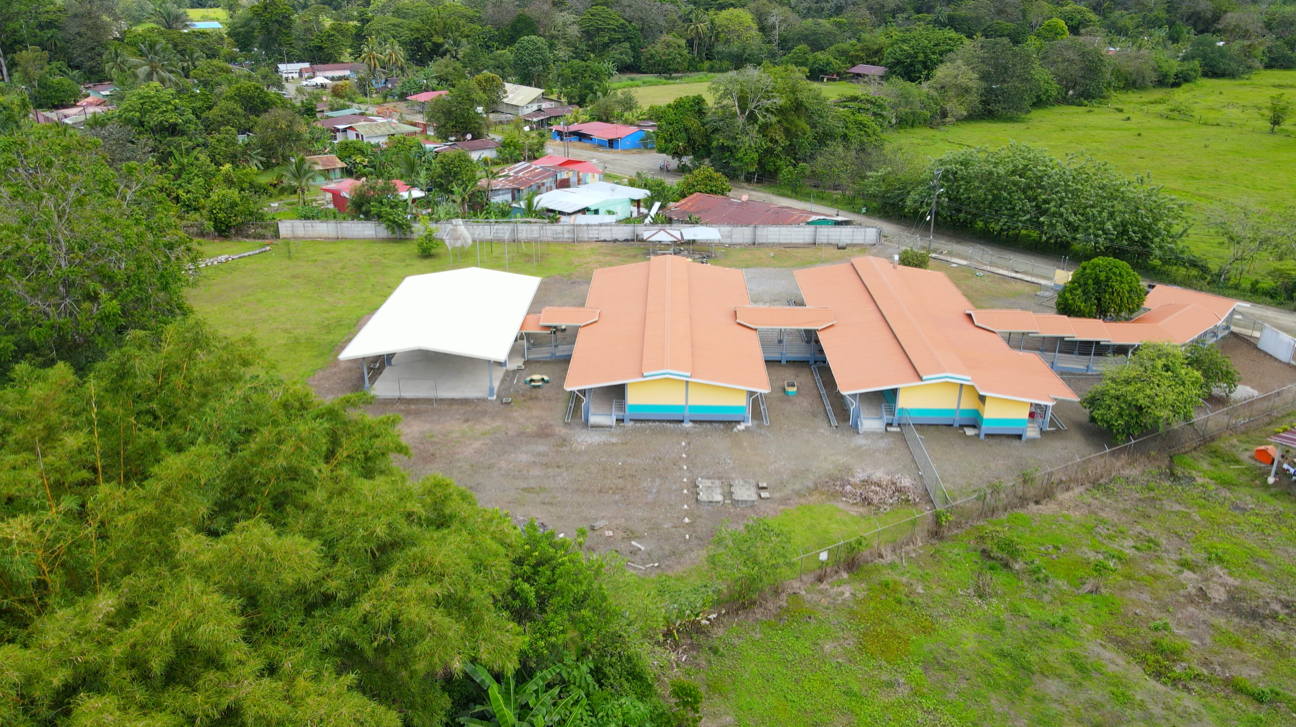The Refugio Tinti is located near La Gamba de Golfito, a very diverse community of about 700 inhabitants. As everywhere, not only the achievements of our modern life style are shown here, but also its challenges, which are noticeable in the environment, the economy and the social structures. However, improvement can only take place with all players collaborating and all areas addressed simultaneously.
A series of community interviews showed that the biggest expense of nearly all inhabitants is food. As methods of food production are some of the most crucial elements in restoring the ecosystem, we developed several interconnected projects that – directly and indirectly – address this issue alongside many others, such as health, economy, education and social cohesion.
This resulted in the plan to establish a permacultural education and consultation center in the school of La Gamba, primarily to facilitate regenerative cultivation of lands within the community. This should improve food security, health and quality of life in general, while simultaneously allowing the environment to recover.
In addition, workshops and specific professional training courses will be held in the community hall and in the Refugio Tinti. These are intended to provide residents with the opportunity to learn not only about regenerative agricultural methods, but also to acquire new skills useful to the community. Through these skills income can circulate within the community and may stimulate a local economy, which in turn would contribute to social empowerment.
At the core of the proposed project is the transformation of the local school grounds of about one hectar into a permaculturally inspired, productive and sustainable system, which the children can observe and in which they are free to participate. While the image above shows the current state of the school grounds, the aerial image below shows the school grounds with an overlaid illustration of the proposed permacultural system (Credits: Allan Campbell).

Simultaneously, we will organize regular workshops for the entire village on subjects such as sustainable food cultivation techniques, methods to generate income through value-added products and vocational training. Along the way, the establishment of a microcredit system can enable villagers to implement entrepreneurial ventures based on skills learned in the workshops.
Having interviewed over 10% of all village inhabitants so far, we found overwhelming support for this project. Furthermore, the Costa Rican Ministry of the Environment and Energy (MINAE), the mayor of La Gamba, the National Parks Foundation, and the principal of the school have already provided letters of support for the project.
Immediate and long-term goals
Our first step is to encourage a variety of small initiatives to make production and consumption local and sustainable (e.g., locally tayloring compostable school uniforms, building household composting systems, offering permaculture workshops, enabling waste separation etc.). This can be started with little upfront investment.
Once sufficient funds are available, we will implement the elements described above over a period of four years. This includes the transformation of the school grounds, regular vocational and permaculture workshops, consultations and assistance for village inhabitants to apply these techniques on their land, and the establishment of a village market to encourage collaboration and support the local economy.
Help us to make the next steps!
We are thankful for your support! If you are interested in supporting this project, please click the button below. If you would like to become an investor, we are happy to provide an extended project description as well as a detailed financial plan. If you have questions please contact us here.
.
.





